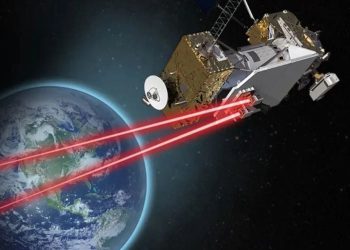China’s Tianwen-1 Mars mission’s Zhurong rove has discovered evidence of liquid water at low Martian latitudes, suggesting the possibility of habitable environments.
According to a report published in the journal Science Advances, the new discovery contradicts previous assumptions that water could only exist as a solid or gas on Mars. The rover identified the evidence by analyzing the morphological features and mineral compositions of dunes in its landing area. A study led by Professor Xiaoguang Qin from the Chinese Academy of Sciences’ Institute of Geology and Geophysics (IGG) confirmed the discovery.
Previous studies show that liquid water on Mars was once abundant, but with the loss of atmosphere, it became difficult for liquid water to exist. However, recent evidence shows that salty liquid water can appear in the summer at high latitudes, and simulations suggest it can occur in some areas. The Zhurong rover from China’s Mars exploration mission successfully landed in May 2021, filling the gap by providing evidence of liquid water at low latitudes on Mars. The landing site is located at the southern edge of the Utopia Planitia Plain.
Professor Qin stated that the dune surface characteristics on Mars, as inferred from the meteorological data gathered by Zhurong and other Mars rovers, are related to the presence of liquid saline water formed from the melting of frost or snow on the salt-containing dune surfaces during cooling. The salts in the dunes cause frost or snow to melt at low temperatures, resulting in the formation of salty liquid water.
This saline water then dries and forms hydrated minerals that cement sand particles together, creating sand aggregates and crusts that eventually crack due to shrinkage. This process forms polygonal ridges and strip-like traces on the crust surface. The age of the dunes is estimated to be between 0.4 and 1.4 million years, and the relationship between the three phases of water suggests that the transfer of water vapor from the polar ice sheet towards the equator during the late Amazonian period of Mars’s large obliquity stages led to humid environments at low latitudes.
This indicates a scenario of water activity where cooling at low latitudes during Mars’s large obliquity stages causes frost or snow to fall, resulting in the formation of crusts and aggregates on the salty dune surface, solidifying the dunes and leaving traces of liquid saline water activity.
The discovery of liquid water at Martian low latitudes is significant in understanding the Martian climate’s evolutionary history, searching for a habitable environment, and providing vital clues for future searches for life.

































